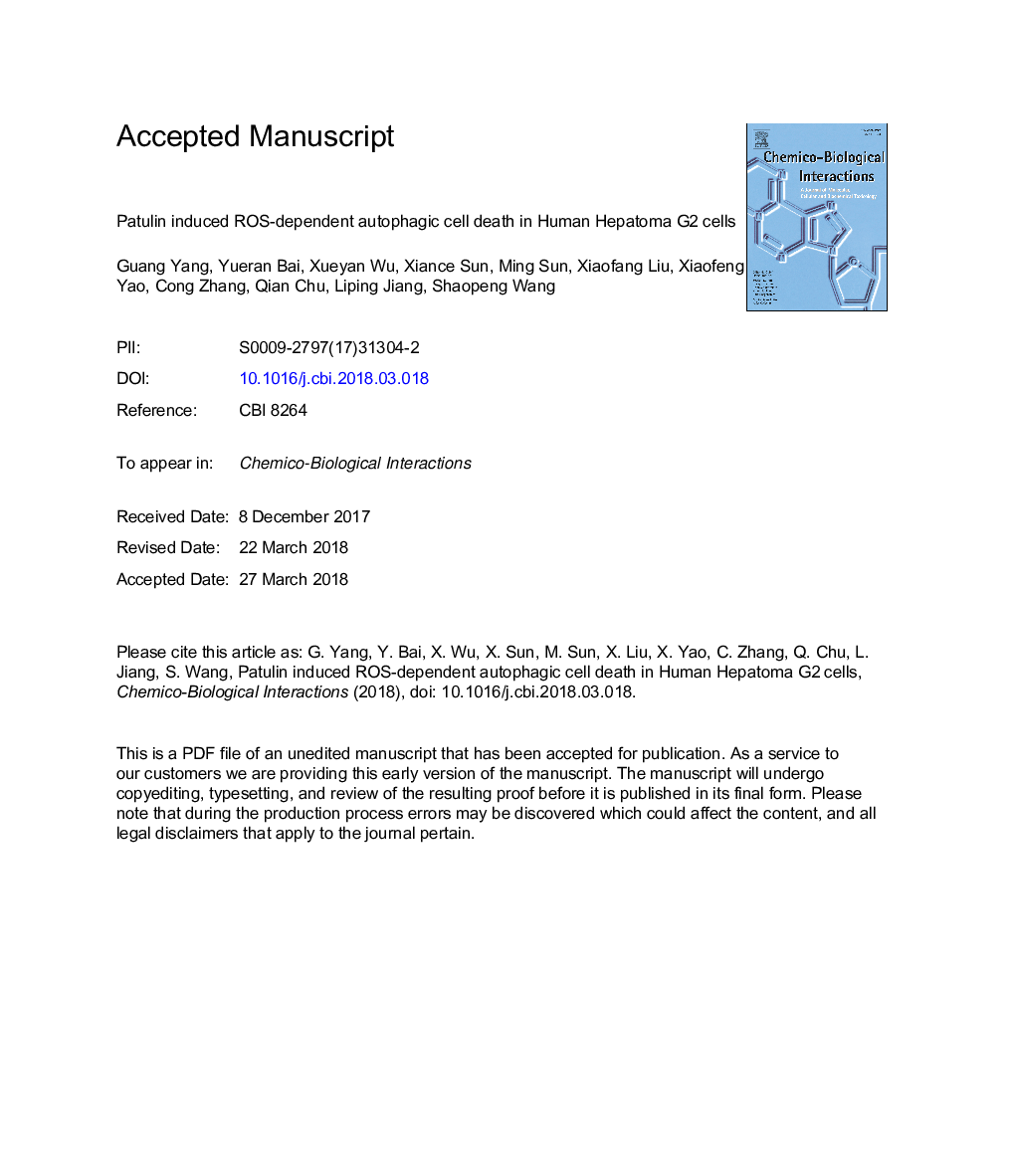| Article ID | Journal | Published Year | Pages | File Type |
|---|---|---|---|---|
| 8544723 | Chemico-Biological Interactions | 2018 | 30 Pages |
Abstract
Patulin (PAT) is a secondary metabolite produced by certain species of Penicillium, Byssochlamys and Aspergillus. It has been shown to induce liver toxicity, but the possible molecular mechanisms are not completely elucidated. In our study, we treated Human Hepatoma G2 (HepG2) cells by 3-methyladenine (3-MA), an autophagosome formation inhibitor, and rapamycin, an autophagosome formation stimulator. The results showed that 3-MA protected the HepG2 cells against PAT cytotoxicity, while rapamycin decreased the cell viability. Thus, autophagy may play an important role in PAT-induced toxicity. To uncover the mechanism by which cells decrease proliferation and activation of autophagy, we found that collapses of mitochondrial membrane potential (ÎΨm) and reactive oxygen species (ROS) level were increased under treatment with PAT. Further, we elucidated that the expression of p-Akt1 and p-MTOR was inhibited during this process. N-acetyl-l-cysteine (NAC), a ROS inhibitor, protected against PAT-induced cytotoxicity, decreased the protein expression of LC3-II, and up-regulated the level of p-Akt1 and p-MTOR. These findings suggested that PAT-induced autophagic cell death was ROS-dependent in HepG2 cells. In conclusion, it is possible that PAT elicited autophagy through ROS-Akt1-MTOR pathway in the HepG2 cells.
Related Topics
Life Sciences
Environmental Science
Health, Toxicology and Mutagenesis
Authors
Guang Yang, Yueran Bai, Xueyan Wu, Xiance Sun, Ming Sun, Xiaofang Liu, Xiaofeng Yao, Cong Zhang, Qian Chu, Liping Jiang, Shaopeng Wang,
